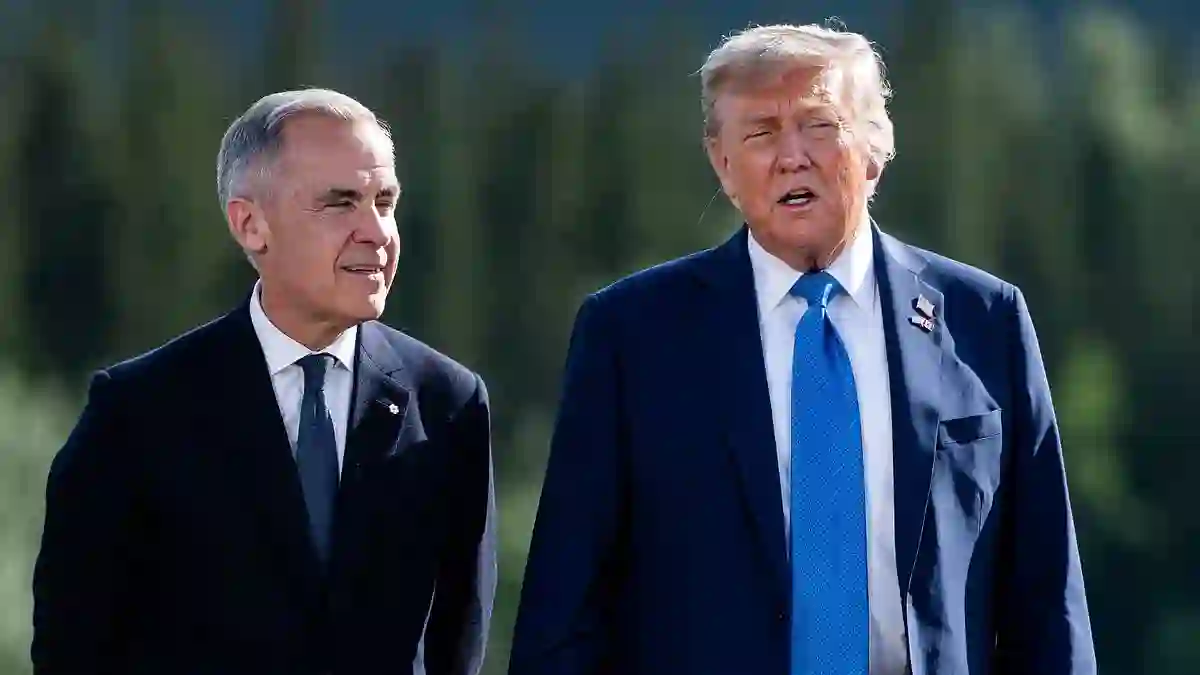Just when it looked like the U.S. and Canada were inching closer to a trade truce, Donald Trump decided to hit reset.
In a move that caught even seasoned negotiators off guard, Trump fired off a scathing letter to Canadian Prime Minister Mark Carney, reigniting tensions and threatening to derail ongoing tariff discussions.
Trump’s Letter Drops a Bombshell on Trade Talks
The letter, which Trump posted publicly on Truth Social Thursday night, didn’t just ruffle feathers — it effectively blew up the fragile progress both countries had made.
Trump announced a fresh tariff hike on Canadian imports, bumping the rate up to 35 percent starting August 1 — a 10 percent increase over the current figure.
His reasoning? Trump linked the move to Canada’s alleged inaction on the U.S. fentanyl crisis, saying the northern neighbor wasn’t doing enough to curb the flow of deadly drugs into the U.S.
Fentanyl Crisis Becomes a Trade Bargaining Chip
In his letter, Trump didn’t hold back. “The flow of fentanyl is hardly the only challenge we face with Canada,” he wrote.
He accused Canada of hiding behind both tariff and non-tariff barriers, and called out what he sees as an uneven playing field.
Despite that tough talk, Trump did leave a window open — barely.
He hinted the tariffs could still be modified if Canada worked with the U.S. to clamp down on drug trafficking.
A Clear Warning to Canada About Retaliation
Trump also made one thing crystal clear: if Canada retaliates, he won’t hesitate to hit back even harder.
“These tariffs may be modified, upward or downward,” he added, making it known that America’s response would depend on Canada’s actions.
This comes as an escalation on top of earlier tariffs on steel, copper, and aluminum — which were already raised to a staggering 50 percent in June for most countries.
What This Means for American Households
With metals like steel and aluminum playing a huge role in everything from soup cans to cars, experts are warning that American consumers could soon feel the pinch.
The higher tariffs will likely raise prices on household items and big-ticket products alike, adding more pressure to already stretched budgets.
Before this hike, steel and aluminum had been taxed at 25 percent since March — already a heavy blow for manufacturers and retailers.
Wall Street Expects a Walk-Back — But Will It Happen?
Despite all the tough talk, investors seem skeptical Trump will follow through completely.
The S&P 500 has remained fairly steady, with many on Wall Street betting Trump will scale back or delay the tariffs, as he’s done before.
Still, that uncertainty isn’t doing any favors for international relations — or business planning.
A Pattern of Global Tariff Letters
Trump’s letter to Carney wasn’t a one-off. Over the past week, he’s sent similar warnings to leaders around the world, suggesting a sweeping new set of tariffs could be coming — just like the ones he proposed on what he dubbed “Liberation Day” back on April 2.
At the time, Trump slapped a baseline 10 percent tariff on nearly all imported goods.
Now, he’s hinting that figure could double soon, telling NBC News, “We’re just going to say all of the remaining countries are going to pay, whether it’s 20 percent or 15 percent.”
Why Target Canada Now?
While Trump’s global tariff spree isn’t new, the decision to specifically go after Canada — America’s second-largest trading partner after Mexico — took many by surprise.
Carney, who took office in April, has positioned himself as a strong defender of Canadian interests.
In a statement posted on X (formerly Twitter), he pushed back against Trump’s pressure, writing, “We will continue to defend our workers and businesses as we move toward the August 1 deadline.”
Canada’s New Direction Under Carney
Unlike previous Canadian leaders, Carney hasn’t been shy about distancing himself from the U.S. In fact, he’s made a point of pivoting toward partnerships with the EU and UK.
Just hours before Trump’s letter went public, Carney posted a photo with UK Prime Minister Keir Starmer, stating that “the world is turning to reliable economic partners like Canada.”
Carney’s approach is clear: defend Canadian sovereignty while looking for allies outside of Washington.
Behind the Scenes: A Frosty Relationship
When Carney visited the White House in May, public interactions were civil — but privately, the talks went nowhere.
Trump reportedly told him flat out that there was “nothing” Carney could say to get the tariffs removed.
Carney, for his part, has taken a long view. “There are much bigger forces involved,” he said.
“And this will take some time and some discussions.”
Trump’s Tariff Trail Spans the Globe
So far, Trump has sent similar tariff warnings to at least 23 countries.
Brazil, for example, was hit with a 50 percent tariff in response to the trial of its former president, Jair Bolsonaro — a situation that echoes Trump’s own legal troubles over the 2020 election.
Despite claiming he would secure “easy” trade wins, Trump’s administration has struggled to finalize many deals.
Since the dramatic market dip following the April 2 tariffs, Trump has softened some of his stances, initiating a 90-day negotiation window.
He’s had modest success with trade frameworks for Vietnam, the UK, and a revised deal with China.
But even those relationships remain strained. China, for instance, still faces tariffs as high as 55 percent — down from an earlier peak of 145 percent.
Looking Ahead: Another Deadline, More Uncertainty
Back in June, Trump had briefly suspended trade talks with Canada over its proposed digital services tax — a policy that would’ve hit U.S. tech giants hard.
That disagreement was only resolved after Carney agreed to drop the tax, allowing discussions to resume.
Now, with the August 1 deadline looming and the new 35 percent tariffs set to kick in, all eyes are on what Canada will do next — and whether Trump will actually follow through.
One thing’s for sure: the road to a trade deal just got bumpier.



